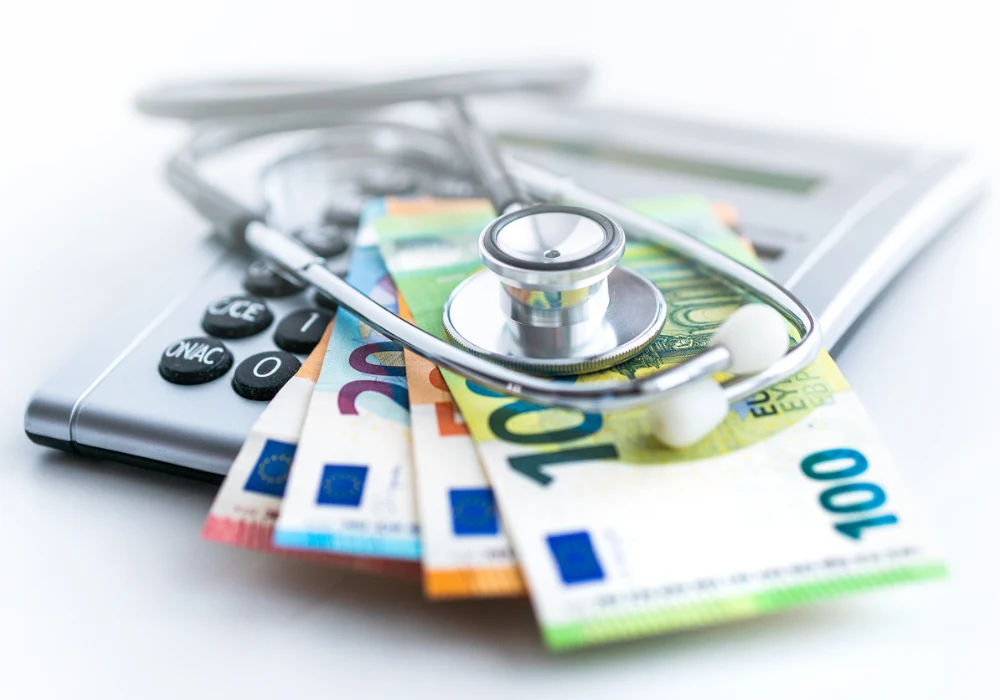The share of healthcare expenditure paid directly by households is a key indicator of how costs are distributed across European systems. Data covering European Union member states and associated countries shows clear contrasts in the level of household contributions. While the EU27 aggregate remained broadly stable between 2014 and 2022, countries vary significantly, with some reporting levels close to 40 percent and others remaining below 10 percent. These differences highlight distinct financial patterns across the continent.
EU27 Trends from 2014 to 2022
The EU27 aggregate is available from 2014 to 2022. Over this period, the proportion of current health expenditure financed out-of-pocket showed little variation, pointing to a relatively stable overall share. The dataset therefore indicates that, on average, households in the EU27 contributed a steady proportion of health spending. This stability, however, does not imply uniformity across member states, as country-level data reveals wide disparities.
The EU27 series provides a useful benchmark, but it is limited in coverage compared with the country-level time series that extend back to 2005. This broader dataset allows for the identification of longer-term patterns in individual countries, including both persistently high and persistently low levels of household spending.
Countries with Higher Household Shares
Some countries consistently record out-of-pocket contributions far above the EU average. Bulgaria reports the highest long-term average, close to 40 percent of current health expenditure. Latvia follows with around 37 percent, while Cyprus, Malta and Greece all report above 33 percent. These levels indicate that households in these countries are responsible for a substantial share of health costs across the full period covered, from 2005 to 2023.
The persistence of such high percentages across almost two decades highlights a structural feature of the data. Even though fluctuations are present from year to year, the overall ranking of these countries at the top of the distribution has remained stable. This contrasts strongly with countries at the lower end, where household contributions have consistently been kept at much lower levels.
Countries with Lower Household Shares
At the other end of the distribution, several countries have maintained long-term averages well below the EU27 aggregate. France reports the lowest average, just under 10 percent. The Netherlands and Luxembourg follow closely, both around 10 percent. Croatia and Slovenia also belong to this group, averaging between 10 and 12 percent. These results show that in these countries, households finance only a small fraction of total health expenditure.
The consistency of these levels across the years suggests that these countries have remained at the lower end of the distribution throughout the observation period. While differences exist within the group, the overall range is narrow, staying close to one tenth of total expenditure. This stability contrasts with the much higher shares observed in Bulgaria, Latvia, Cyprus, Malta and Greece.
Must Read: EU Health Spending: Trends and Priorities
Between 2014 and 2022, the EU27 average for out-of-pocket expenditure remained broadly stable, suggesting that the aggregate level of household contribution to healthcare has not shifted significantly. Beneath this stability, however, lie wide differences. Countries such as Bulgaria, Latvia, Cyprus, Malta and Greece consistently record household shares above one third of total health expenditure, while France, the Netherlands, Luxembourg, Croatia and Slovenia maintain levels close to one tenth. These results show a persistent divergence in how health costs are shared across European countries, despite overall stability at the EU27 level.
Source: Eurostat
Image Credit: iStock






